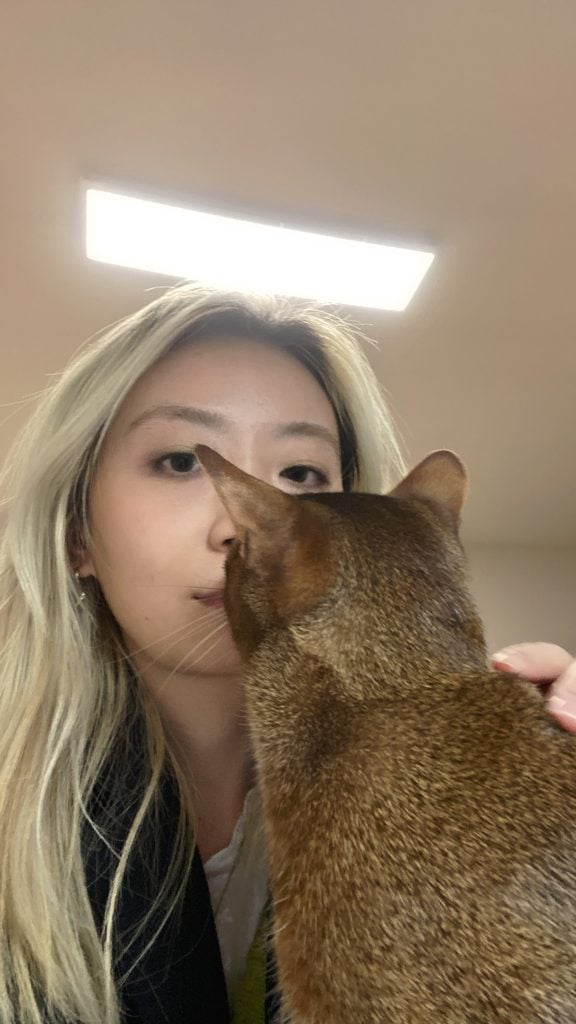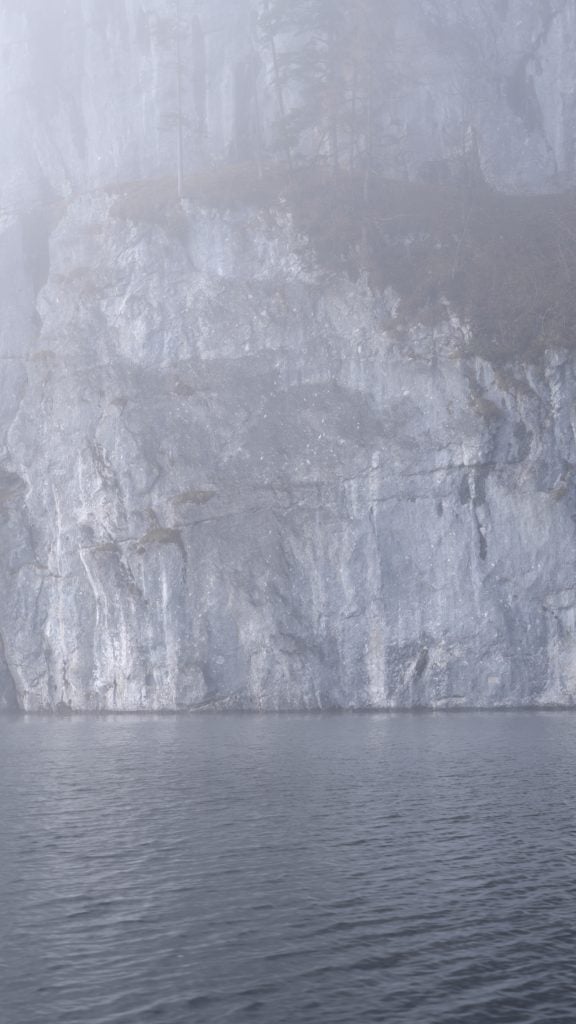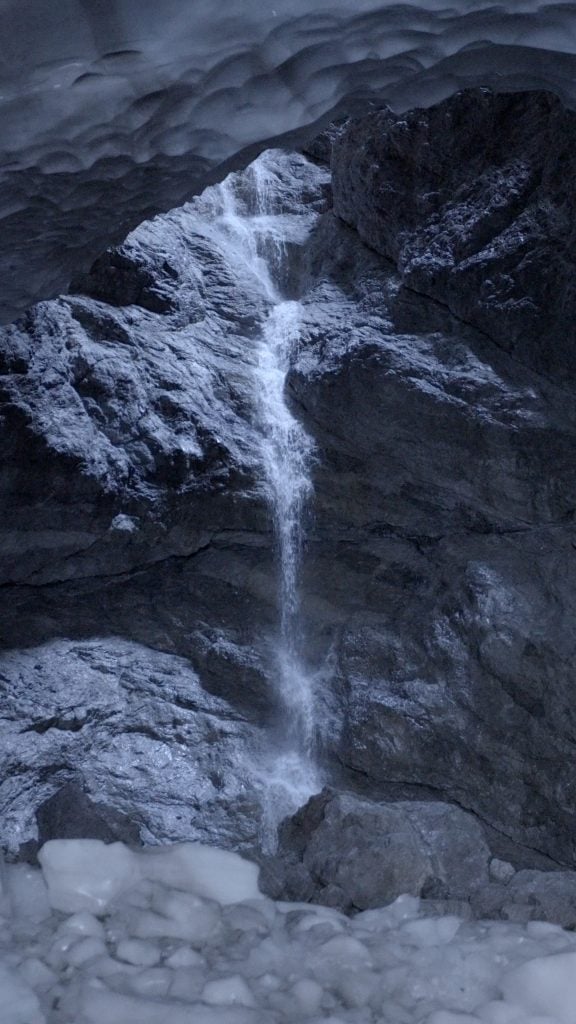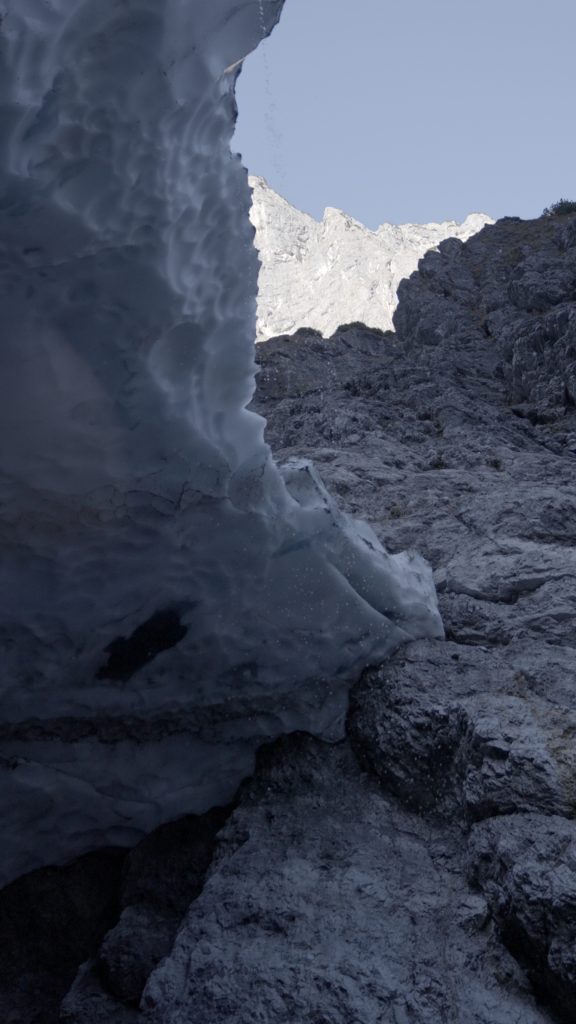Gallery Network
7 Questions for Artist Yang Dingliu on Why She’s Documenting One of Germany’s Disappearing Ice Caves
Yang Dingliu's project 'Eiskapelle' is on view with Mou Projects at Art Basel Hong Kong this week.

Yang Dingliu's project 'Eiskapelle' is on view with Mou Projects at Art Basel Hong Kong this week.

Artnet Gallery Network

This week at Art Basel Hong Kong 2023, Mou Projects is staging the solo presentation “Eiskapelle,” comprised of a series of four video works by Chinese artist Yang Dingliu (b. 1992). Based in Germany, Yang’s project is centered on the Eiskapelle ice cave situated in the mountains surrounding lake Königssee in Schönau am Königsee, Germany. Eiskapelle, which means “ice chapel” in German, is succumbing to climate-related destruction, and Yang’s work illustrates how the melting and erosion of ice may seem slow to an individual observer, from a universal perspective it will be gone in the blink of an eye. Within the presentation at Art Basel Hong Kong, the placement of the individual video works evokes the topological arrangement of the depicted details of the landscape.
Through extensive postproduction intervention in the videos, Yang is able to tap into ideas around nature, history, and perception. These conceptual imperatives are a consistent theme in the artist’s practice, with many of her projects centering on highly specific locales that she develops a personal resonance with.
We caught up with Yang to learn more about her endeavors with video art, and what her process working with specific places looks like.

Yang Dingliu, Eiskapelle II (2022–23). Courtesy of Mou Projects, Hong Kong.
Tell us about your background, when did you first start making video art?
My training in painting officially started in secondary school when I studied at the Affiliated High School of China Academy of Art. I majored in printmaking at China Academy of Art and I focused on traditional Chinese watermark woodcut. I practiced making videos when I began my studies at Kunstakademie Dusseldorf, but my interest in video truly took off when my friend lent me a film projector in senior year—I would take it to a friend’s and project photos taken during the summer everywhere around the house and in the yard, but later I felt that was not enough, so I borrowed a tiny video projector again, and that was the beginning of everything.
Mou Projects is presenting your work in “Eiskapelle” at Art Basel Hong Kong. Can you talk about the works in the show?
This is a similar approach to my graduation project “Uryouland” completed half a year ago in that both are an attempt to reconstruct landscape in an abstract and symbolic manner. The difference is that “Uryouland” features a purely fictional location, whereas “Eiskapelle” is an effort to record and preserve this vanishing landscape as genuinely as possible.
What initially inspired this series of work?
A lot of influences drawn from landscape paintings in the Song and Yuan dynasties.

Yang Dingliu, Eiskapelle III (2022–23). Courtesy of Mou Projects, Hong Kong.
For visitors to the fair who see your work, what do you hope to inspire? What do you want viewers to take away with them?
I have always been advocating for open-ended and free interpretations instead of forcing certain views upon the viewer; if they are willing to pause, look, and experience the work for a moment, that is all that matters.
Can you tell us a bit about your creative process, and how these works were made?
I would usually conduct some research in advance, pick an area, and stay there for a sufficient amount of time until the place resonated with me—I would then start my shooting, and only then; this process feels a bit like panning for gold. Researching ahead of time allows me to see and recognize the value of a certain place, and this process involves myriad factors as well as coincidences.

Yang Dingliu, Eiskapelle IV (2022–23). Courtesy of Mou Projects, Hong Kong.
Where do you most commonly find inspiration? Art there any artists—historic or contemporary—that have influenced your work the most?
I think the most fundamental inspiration springs from observation—of nature, people, objects, and my surroundings at large. To me, the studies of art, knowledge, and technology are all also part of the learning process, and the essence of that process is to translate and transform the skills acquired and inspiration found into the momentum and power of works produced.
What’s next on the horizon for you? Are there any other forthcoming projects or series that you can tell us about?
Recently, I have been shifting from observing nature to observing moments in natural settings. The next step is to prepare a comprehensive project for the solo exhibition at Mou Projects, focusing on certain water-related movements, which may also be filmed in a richer and longer way, almost like documentaries, and featuring video installations as well as sculpture works inspired by the former.
“Yang Dingliu: Eiskapelle” presented by Mou Projects is on view at Art Basel Hong Kong March 23–25, 2023.